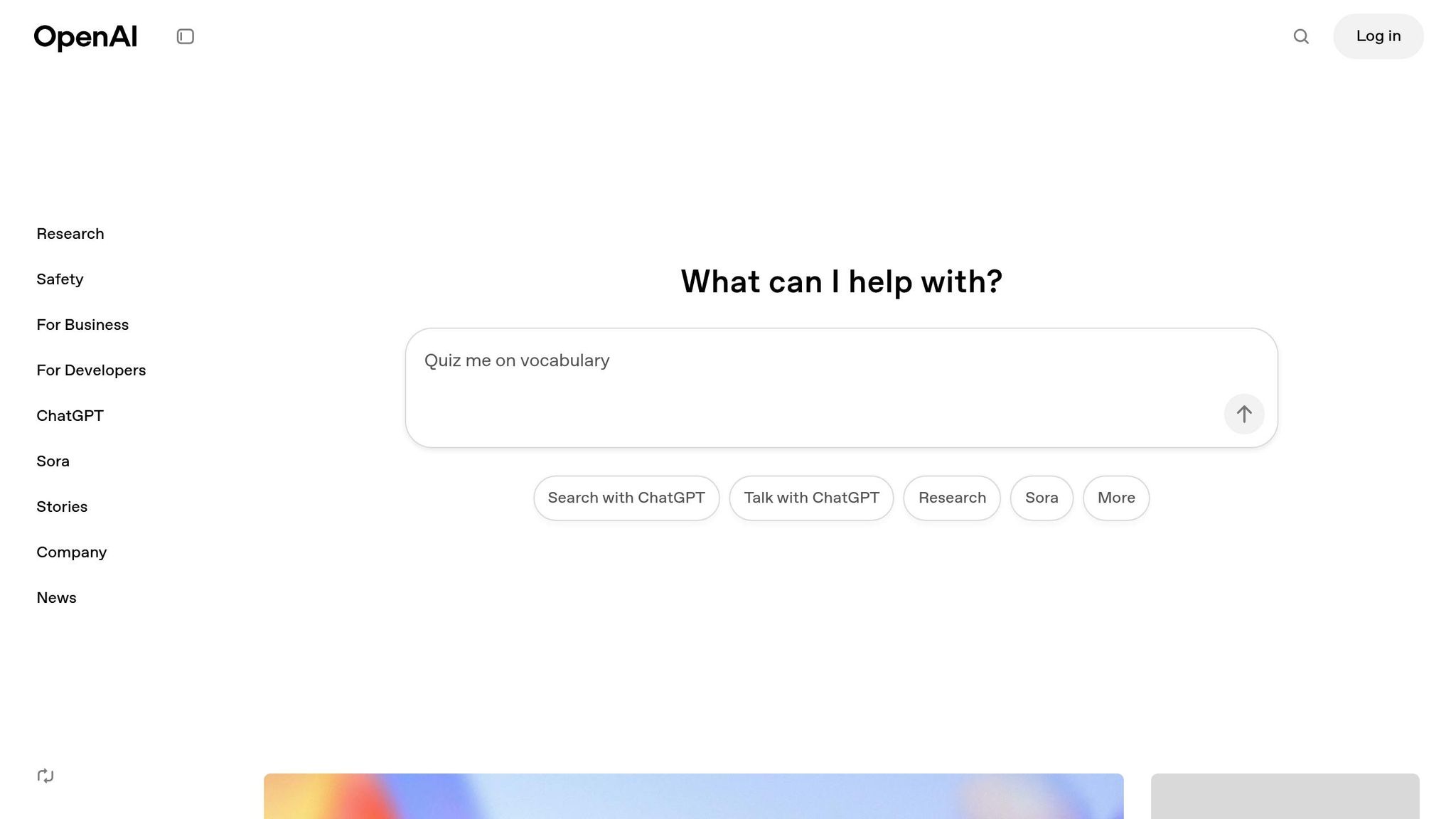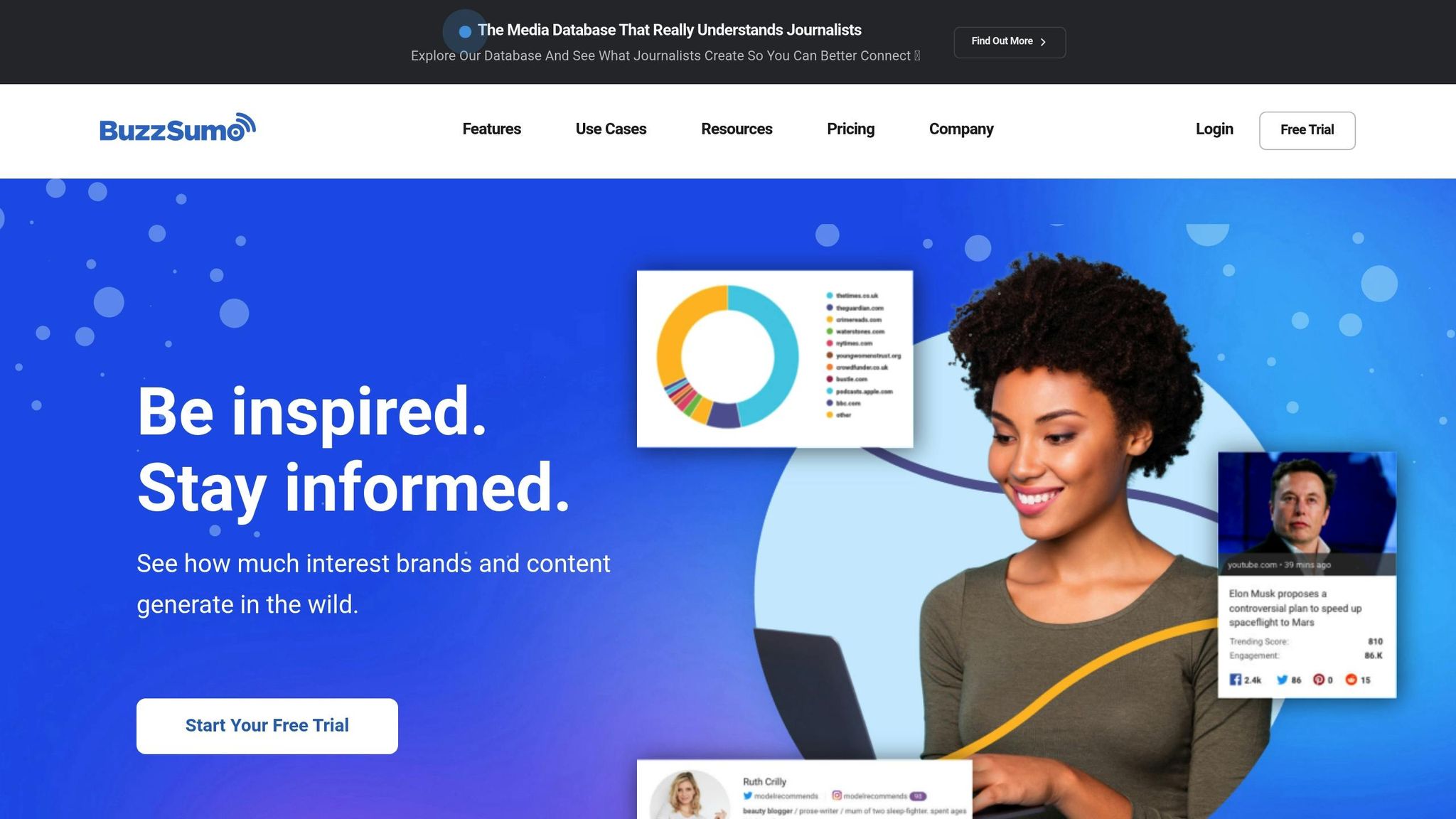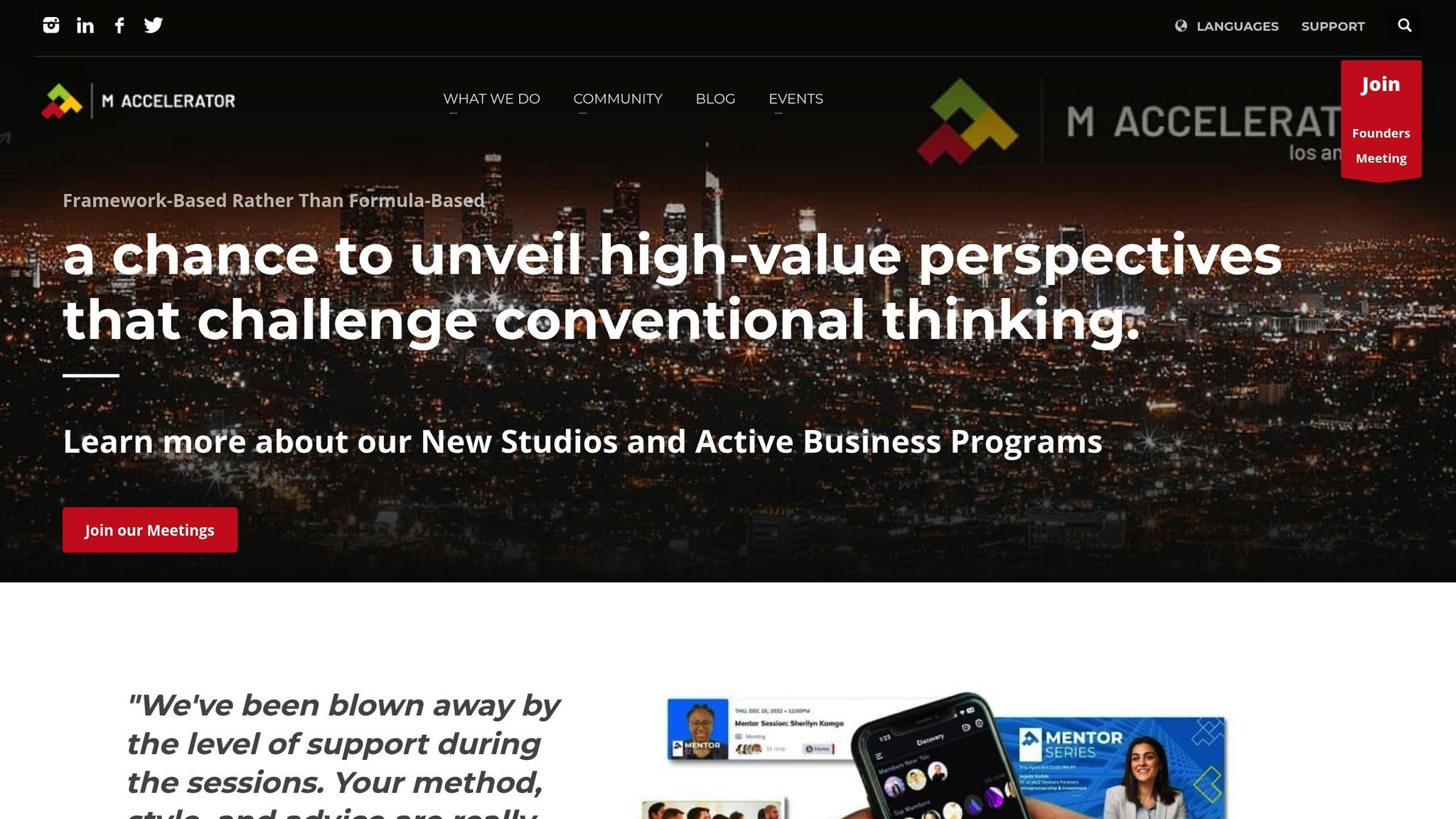Startups are growing faster by teaming up with tech partners. These partnerships let companies focus on their strengths while using ready-made tools and expertise from established providers. This approach saves time, lowers costs, and helps startups enter markets faster.
Key takeaways:
- Faster Growth: Access to advanced infrastructure like cloud computing and payment systems.
- Improved Efficiency: Pre-built solutions reduce technical and regulatory hurdles.
- Reduced Risks: Partners provide security, compliance, and expertise.
Examples of Success:
- OpenAI & Microsoft: Used Azure for AI development, boosting both companies.
- Shopify & Stripe: Simplified global payments for e-commerce merchants.
- Buzzsumo & AWS: Managed massive data processing needs with scalable cloud services.
Startups can avoid pitfalls by:
- Setting clear goals and communication plans.
- Using flexible systems that prevent over-reliance on one partner.
- Starting with smaller projects to build trust.
Conclusion: Tech partnerships are vital for startups looking to grow efficiently. They offer access to tools, expertise, and networks that would otherwise be costly or time-consuming to develop in-house. Success depends on clear planning, flexibility, and strong collaboration.
The Successful Startup and Enterprise Partnership with Greylock Partner Sarah Guo | Greymatter

Case Studies: Startups That Scaled Through Tech Partnerships
Real-world examples show how teaming up with the right tech partners can help startups grow into industry leaders by using smart and impactful strategies.
Case Study 1: OpenAI and Microsoft

One standout example of a successful tech partnership is OpenAI joining forces with Microsoft. By tapping into Microsoft’s Azure cloud infrastructure, OpenAI gained the computational power needed to train and deploy its advanced language models. This collaboration sped up the development of cutting-edge AI services while also allowing Microsoft to enhance its own products, like search tools and productivity platforms, with AI capabilities. Together, they demonstrated how a well-aligned tech partnership can fuel rapid innovation and establish market dominance.
Case Study 2: Shopify and Stripe

Shopify’s partnership with Stripe revolutionized the payment experience for merchants. By integrating Stripe natively, Shopify eliminated the delays and complications merchants often faced during payment setup. This seamless and secure payment solution enabled Shopify to expand globally, making it easier for merchants worldwide to operate efficiently. As a result, Shopify solidified its position as a leading e-commerce platform.
Case Study 3: Buzzsumo and AWS

Buzzsumo, a platform specializing in content marketing insights, turned to Amazon Web Services (AWS) to handle its massive data processing needs. The challenge was clear: analyzing enormous amounts of online content in real time. AWS’s scalable cloud solutions provided the flexibility Buzzsumo needed to process and store large datasets, deliver actionable insights to marketers, and manage spikes in data traffic without requiring heavy upfront investments in infrastructure. This partnership allowed Buzzsumo to stay agile and meet the demands of its growing user base.
M Accelerator‘s Role in Facilitating Technology Partnerships

Building on the success of these partnerships, M Accelerator helps startups create similar impactful collaborations. Based in Los Angeles, M Accelerator has worked with over 500 founders, facilitated more than $50 million in funding, and built a network of over 25,000 investors. By offering a structured approach that combines strategy and execution, they guide startups in forming strong tech partnerships. Their hands-on support ensures smooth technical integration, clear communication, and alignment of goals, helping startups avoid common pitfalls and achieve sustainable growth through mutually beneficial relationships.
Benefits and Challenges of Technology Partnerships
Technology partnerships can be a game-changer for startups looking to grow, but they also come with their own set of hurdles. Balancing the advantages and drawbacks is key to making these collaborations work effectively.
Comparison Table: Pros and Cons of Tech Partnerships
| Benefits | Challenges |
|---|---|
| Faster Market Entry: Using established infrastructure allows startups to get to market quicker. | Technical Integration: Compatibility issues can lead to unexpected delays. |
| Cost Efficiency: Reduces the need for large upfront investments in infrastructure. | Over-reliance: Depending too much on a partner can threaten business continuity. |
| Expert Knowledge: Access to specialized expertise without building a full in-house team. | Cultural Misalignment: Differences in values and decision-making can cause friction. |
| Scalability: Enables growth without requiring massive initial expenditures. | Revenue Sharing: Profit margins may be affected by partnership agreements. |
| Market Credibility: Partnering with established brands builds customer trust. | Limited Control: Partners may prioritize their own goals over the startup’s needs. |
| Global Reach: Opens doors to international markets through partner networks. | Communication Gaps: Misalignment between teams can slow progress. |
Let’s break this down further by looking at the financial, technical, and cultural aspects that shape these tradeoffs.
Financial Impact: Partnerships often come with revenue-sharing models or licensing agreements that can affect a startup’s bottom line. While these arrangements can lower initial costs, recurring fees or reduced profit margins might strain resources in the long run.
Technical Challenges: Integration is one of the trickiest parts of any technology partnership. Even the best-laid plans can face hiccups when systems don’t align perfectly. Conducting thorough pilots and early testing can help identify and address potential roadblocks before they escalate.
Cultural Differences: Startups often thrive on agility, while larger partners may have more formal, slower processes. This mismatch can lead to frustration unless clear communication protocols – like regular check-ins and shared tools – are established early on.
To reduce risks, startups should avoid putting all their eggs in one basket. Diversifying partnerships and maintaining control over core functions ensures stability. Starting small with limited-scope projects can help build trust and work out any kinks before scaling up the collaboration.
sbb-itb-32a2de3
Best Practices for Startups Using Technology Partnerships
For startups, technology partnerships can be a game-changer – but only when approached with the right mindset and strategy. Integrating these partnerships into your core operations, rather than treating them as side projects, is key. Here are some practical ways to make the most of these collaborations.
Aligning Strategy, Execution, and Communication
One mistake many startups make is viewing partnerships as optional extras instead of essential parts of their overall business plan. To avoid this, start by getting all teams on the same page early. Clear communication and shared objectives are crucial for success.
Set specific, measurable goals. For example, instead of saying, "We want to grow", aim for something concrete, like reducing customer acquisition costs by 20% or entering a new market by the next quarter. Regular check-ins help keep everyone accountable and ensure goals remain aligned. Shared tools and success metrics can also streamline collaboration and keep things on track.
When this strategic groundwork is laid, it becomes easier to adopt flexible, adaptable approaches that are critical for growth.
Prioritizing Flexible, Tech-Agnostic Frameworks
Committing to a single platform or rigid system can backfire, especially in fast-evolving industries. Instead, startups should focus on building modular systems. These allow you to update or replace individual components without jeopardizing the entire operation.
When drafting agreements with partners, include clauses for data portability and transition periods. This ensures you’re prepared for potential changes, like price adjustments or shifts in technology.
Take M Accelerator as an example. Their tech-agnostic framework allows them to work across industries like cleantech, web3, and sports tech without locking clients into one-size-fits-all solutions. Having supported over 500 founders, their approach shows how flexibility enables startups to adapt and thrive in ever-changing markets.
Once you’ve established a flexible system, the next step is to focus on cultivating strong, lasting partnerships.
Building Long-Term Partnerships
Enduring partnerships don’t just happen – they require ongoing effort. Startups that invest in mutual success are more likely to build relationships that stand the test of time. This could mean offering joint training programs, scheduling regular performance reviews, or maintaining active communication with key contacts at partner organizations.
Conclusion: The Future of Technology Partnerships in the US Startup Ecosystem
The startup world moves fast, and technology partnerships have become a cornerstone of growth. The examples we’ve explored highlight how joining forces with the right partners can propel companies far beyond what they could achieve on their own.
Startups that embrace these collaborations often see clear advantages. But success doesn’t happen by chance – it depends on aligning strategy, execution, and communication every step of the way. When these elements work in harmony, partnerships can unlock incredible opportunities.
As the landscape continues to shift, founders are increasingly called to make partnerships a core part of their business strategy. By leveraging the strengths of an ecosystem, startups can access specialized expertise while staying flexible enough to meet changing market demands. Those that master the art of managing complex partnerships without losing sight of their mission will be the ones to thrive.
Organizations like M Accelerator are helping startups turn obstacles into opportunities by focusing on unified strategies and clear communication. In today’s interconnected world, the right partnership at the right time could be the spark that drives your business to new heights.
FAQs
What should startups consider when choosing a tech partner to support their growth?
To find the right tech partner, startups need to start by clearly outlining their business objectives and technical requirements. This clarity ensures you’re searching for a partner who truly understands and can meet your needs. Focus on partners with solid experience in your industry, a proven history of working with businesses like yours, and the flexibility to grow alongside your company.
Equally important is evaluating their communication style, alignment with your company values, and their dedication to providing ongoing support. The ideal tech partner should not only share your vision but also offer strategic insights and deliver solutions that help fuel consistent growth. By prioritizing these elements, you can establish a partnership that’s both productive and collaborative.
How can startups avoid becoming too dependent on a single technology partner?
Startups can avoid the pitfalls of relying too heavily on a single technology partner by spreading their partnerships across multiple providers. This approach not only offers flexibility but also helps reduce the impact of potential disruptions if one partner falls short.
Another smart move is to invest in internal research and development (R&D). By creating proprietary solutions, startups gain greater control over their operations and reduce dependency on external providers. Pairing this with a flexible tech stack ensures businesses can pivot swiftly when market conditions or technologies evolve.
With a mix of diversified partnerships, in-house innovation, and adaptability, startups can build a strong foundation for growth and remain steady in an ever-changing market.
What are the key elements of a successful technology partnership that help startups scale effectively?
When it comes to forming a technology partnership, startups thrive when a few essential elements are in place. One of the most important is shared goals and a unified vision, which ensure everyone is working toward the same outcomes. Another critical factor is compatibility in work styles and values – this makes collaboration easier and helps both sides fill in each other’s gaps.
Startups also gain a lot from resource sharing, such as access to advanced technology, infrastructure, or specialized expertise. These partnerships can speed up innovation, streamline operations, and even help break into new markets – key advantages for startups aiming to grow and compete effectively. By focusing on these factors, startups can strengthen their foundation and navigate competitive landscapes with confidence.